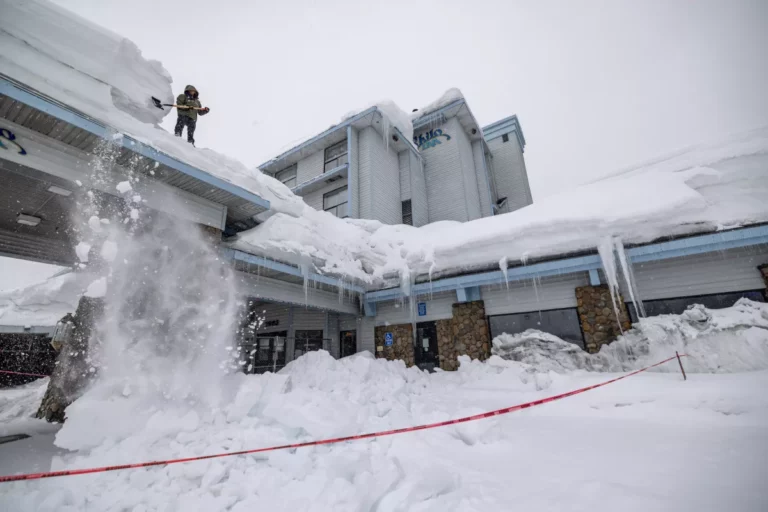Photo: A worker shovels snow from a roof at the Shilo Inn as it continues to deepen in the first days of spring in Mammoth Lakes on March 21. (David McNew / Getty Images)
This winter, as atmospheric rivers slam into California one after another, Daniel Swain isn’t just worried about rain and flooding.
The UCLA climate scientist, who has devoted his life to studying weather, keeps an eye out for a different type of storm.
“A lot of noise,” he says. “A lot of confusion.”
Independent and amateur forecasters, armed with global data available online, have disrupted the quiet, calm science of meteorology by posting their own weather predictions on blogs and social media.
Many of these self-proclaimed “weather nerds” glean information from books and the internet while adding a touch of local knowledge. They can be surprisingly insightful.
But professional meteorologists worry that some try to grab attention by predicting massive storms when the chances are slim. Or try too hard to be first, issuing forecasts based on premature, unreliable information.
In this season of epic rain, snowfall and even “bomb cyclones,” with the public looking to forecasters for potentially life-or-death advice — hunker down or evacuate? — the key is providing warning without overhyping the situation.
“There are amateurs on Twitter who sound good but are wildly extrapolating,” the 33-year-old Swain says. “How does the average person differentiate?”
The business of forecasting has changed radically since (for as little as $10 a month) anyone can subscribe to the same raw data and analytical models the National Weather Service and other professionals use. As Swain puts it: “You don’t need a PhD to be pretty good at understanding certain parts of the weather.”
Access to information has emboldened younger amateurs such as […]
Full article: California storm: Which weather forecasters should you trust? – Los Angeles Times

